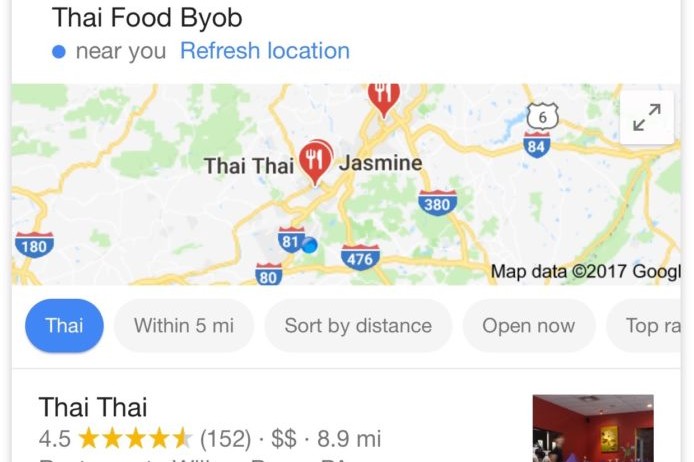Link Building Strategies for New Websites
Imagine that you’ve recently become the owner of a brand-new car (that one you’ve had your eyes on for years). You approach the car, admiring its beauty, open the door, hope behind the wheel, and start it – but it doesn’t start. You have a few “words” with the car, hope out, check under the hood, and to your complete surprise, there’s nothing there.
What does that car fantasy turn nightmare have to do with backlinks and your new site? Elements of SEO like keywords, metadata, and backlinks are the engine and the fuel for your site.
In other words, no matter how great your site looks, if you haven’t taken SEO into consideration, your website won’t be driving towards that first page, top-ranking spots you’ve had your eye on.
Backlinks, or inbound links, when found on quality and relevant pages, can play a vital role in fueling your site’s trip to better rankings for relevant keywords – meaning there are fundamentally important to your overall strategy.
But with a new site, where do you start? How do you start to accumulate backlinks and start to see the fruits of your labors?

Slow and Steady is the Only Way to Win the Backlink Race
Obtaining backlinks, like other SEO practices, has had a sordid past. In the early 2000s, getting backlinks was a lot easier, and more than a few seasoned SEO experts that got their start in that time period are sure to recall the black hat habit of forum and blog spamming.
Fortunately, those days are over, and each Google update has resulted in more stringent rules regarding how backlinks factor into rankings. Today, Google relies on the quality and relevant backlinks and penalizes for other abuses that may have at one time been acceptable.
Unfortunately, that means that building backlinks have become more time-consuming. For starters, quality and relevant backlinks mean being more particular about what sites represent a good match. And that inevitably means spending more time researching links and identifying opportunities.
Who should you reach out to? Here are a few opportunities to keep an eye out for:
- Relevant Sites that Have Broken or Outdated Links
- High Authority Domains with a history of extending backlinks
- Guest Blogging Opportunities
- Sites that host competitor backlinks
- Sites that offer “follow” links vs. “nofollow” links. Basically, if the linking website adds a “nofollow” tag to your link, it’s telling websites not to pass any link authority from the linking website back to your website. Search engines say “nofollow” links do little for SEO, though there are a few thoughts on this. Regardless, it’s also a branding play, so unless the website is worthless even a “nofollow” link can help build your online presence.
Evaluate the Backlink Opportunity
Once you’ve identified potential opportunities for backlinks, it’s time to evaluate each one. In this game, it’s all about what you can offer the webmaster. Do you have an article or infographic that can replace outdated information on their page? A product or service you can extend in exchange for a link, post, or review? Fresh, quality content that their readers will surely enjoy? The answers you derive during this step will help you determine your next steps.
Get Your Content in Order
I’m going to be brutally honest – if your content isn’t up to par, your chances of getting a quality backlink are slim to none. Webmasters are busy, and if it’s a backlink worth pursing, chances are you’re not the only one going after it. If they get to your site and see a plethora of incomplete pages, 404s, or thin content, they’re going to disregard the request.
If you want to increase the likelihood that you receive the desired backlink, then your content needs to prove your worth – this is particularly true with new sites that have little other claims to value. Well-written content with adequate research and support is going to be much more effective than a poorly written, thin, or otherwise lacking post.
The importance of quality content extends past the immediate page you’re planning on pitching. It’s likely the decision will include a review of your overall site. And if you’re site is new, which means it likely doesn’t have a high domain authority, perceived credibility will become a major factor in their decision.
If your site isn’t ready for traffic, then you have no business seeking backlinks and burning potentially strong bridges early in the game.
Building Backlinks: Craft a Solid Pitch
This is perhaps the most important part of building a portfolio of backlinks. Just like a blasé cover letter would land a job candidate at the bottom of the resume pile, an ingenuous hastily written backlink request will yield the same result. Increase your chances of reaping the rewards of a quality backlink by including the following in your requests:
- Compliment the website: I’m not suggesting you send them an email dripping with adoration – that would be a bit transparent – but you should show some respect by dropping a few positive lines and showing that you’ve taken the time to look around their site.
- Show relevance: The chances of getting a backlink for content that isn’t relevant is pretty slim. If you want to increase the chances that they will consider your request, then make it a point to direct them to relevant, original content that you’ve created and that can positively service their audience.
- Explain value: If you’re requesting a backlink, it’s already obvious what they can do for you, but what can you do for them? Do you have a unique product or service their audience would love? Are you continually creating up-to-date, thorough content that can serve their audience? Can you pitch a good guest blog for their site? Do you have your own set of accolades (publications, keynote speeches, extremely relevant professional experience, etc…)? In the end, it all comes down to how you can prove your site is worth the investment. So show your value by focusing on the quality and relevance of your content as opposed to selling your product/service.
- Avoid using overly generic requests: The backlink request process is ongoing and can be tedious, and so a template can alleviate some of the burden. However, use caution when relying completely on a generic request template. Any correspondence should take the aforementioned tips into account and be personalized for each site; otherwise, your request will get lost in the flood of similar generic requests.
Backlinks are essential to fueling your site and driving up traffic, and building a solid portfolio requires a diligent and thorough approach. Collecting backlinks for a new site can be even more challenging, but not impossible.
Before you start sending out requests, be sure to research and determine what sites represent the best match for your needs. Then, create a solid request by identifying and explaining the value of your site and highlighting the quality, original content you can share.
Finally, be patient. This is a long race, and it’s those that are slow, steady, and meticulous in their attempts that will ultimately win.



